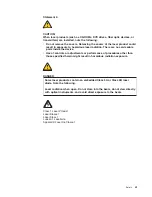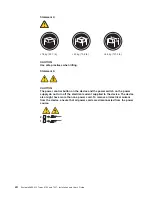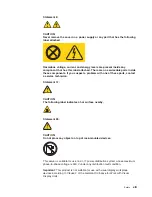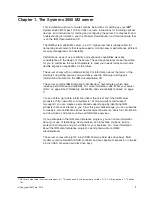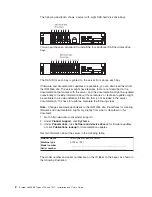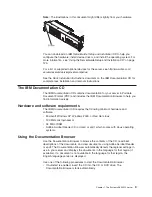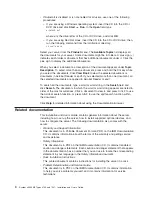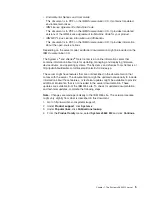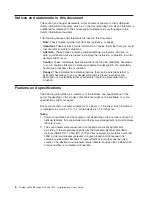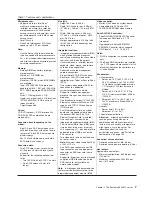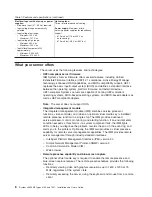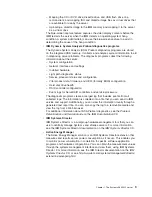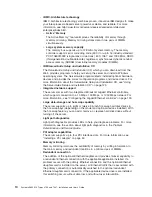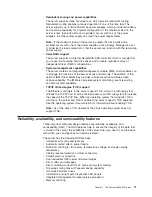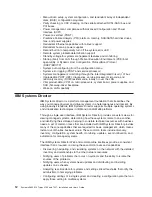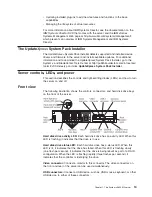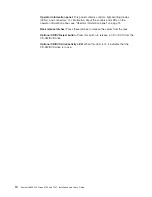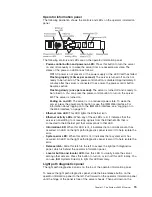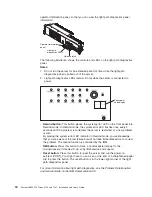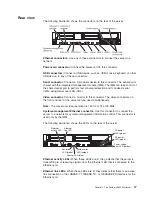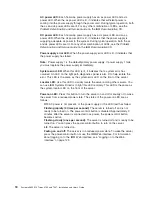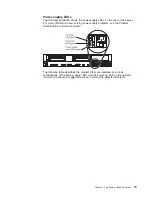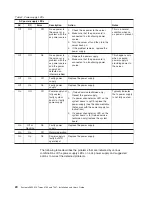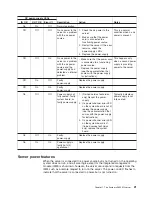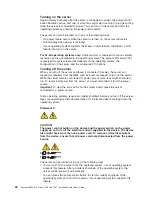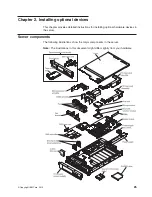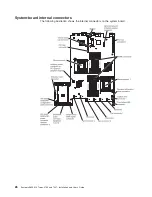
v
Redundant cooling and power capabilities
The server supports three hot-swap fans, which provide redundant cooling.
Redundant cooling enables continued operation if one of the fans fails. The
server supports up to two 675-watt ac power supplies, which provide redundancy
and hot-swap capability for a typical configuration. If the maximum load on the
server is less than 675 watts and a problem occurs with one of the power
supplies, the other power supply can meet the power requirements.
Note:
If the maximum load on the server is greater than 675 watts and a
problem occurs with one of the power supplies, Active Energy Manager can act
to minimize the load somewhat so that the server can function with the remaining
power supply.
v
ServeRAID support
The server supports an internal ServeRAID SAS controller, which is required for
you to use the hot-swap hard disk drives and to create redundant array of
independent disks (RAID) configurations.
v
Systems-management capabilities
The server contains an integrated management module (IMM) which enables you
to manage the functions of the server locally and remotely. The addition of the
optional IBM Virtual Media Key provides remote presence and blue-screen
capture capability. The IMM also provides system monitoring, event recording,
and dial-out alert capability.
v
TCP/IP offload engine (TOE) support
The Ethernet controllers in the server support TOE, which is a technology that
offloads the TCP/IP flow from the microprocessors and I/O subsystem to increase
the speed of the TCP/IP flow. When an operating system that supports TOE is
running on the server and TOE is enabled, the server supports TOE operation.
See the operating-system documentation for information about enabling TOE.
Note:
As of the date of this document, the Linux operating system does not
support TOE.
Reliability, availability, and serviceability features
Three important computer design features are reliability, availability, and
serviceability (RAS). The RAS features help to ensure the integrity of the data that
is stored in the server, the availability of the server when you need it, and the ease
with which you can diagnose and repair problems.
The server has the following RAS features:
v
Automatic error retry and recovery
v
Automatic restart after a power failure
v
Built-in monitoring for fan, power, temperature, voltage, and power-supply
redundancy
v
Cable-presence detection on most connectors
v
Chipkill memory protection
v
Dual redundant UEFI server firmware images
v
Error codes and messages
v
Error correcting code (ECC) L2 cache and system memory
v
Hot-swap cooling fans with speed-sensing capability
v
Hot-swap hard disk drives
v
Information and light path diagnostics LED panels
v
Integrated management module (service processor)
v
Memory mirroring
Chapter 1. The System x3650 M2 server
11
Содержание 7947E3U
Страница 1: ......
Страница 2: ......
Страница 3: ...System x3650 M2 Types 4199 and 7947 Installation and User s Guide...
Страница 8: ...vi System x3650 M2 Types 4199 and 7947 Installation and User s Guide...
Страница 16: ...xiv System x3650 M2 Types 4199 and 7947 Installation and User s Guide...
Страница 40: ...24 System x3650 M2 Types 4199 and 7947 Installation and User s Guide...
Страница 150: ...134 System x3650 M2 Types 4199 and 7947 Installation and User s Guide...
Страница 162: ...Taiwan Class A compliance statement 146 System x3650 M2 Types 4199 and 7947 Installation and User s Guide...
Страница 168: ...152 System x3650 M2 Types 4199 and 7947 Installation and User s Guide...
Страница 169: ......
Страница 170: ...Part Number 81Y6111 Printed in USA 1P P N 81Y6111...

